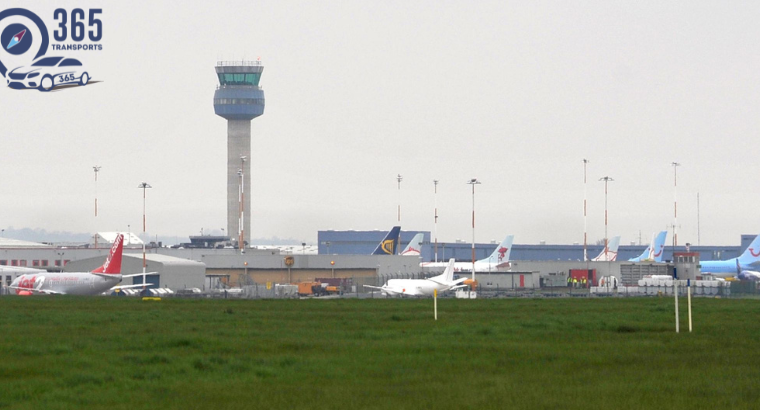
Nestled in the heart of England, East Midlands Airport (EMA) stands as a vital link between the Midlands region and destinations across the globe. Serving as a hub for both passenger and cargo flights, EMA plays a crucial role in facilitating travel, trade, and economic growth. From its humble beginnings to its current status as a bustling aviation center, the airport has evolved to meet the ever-changing needs of travelers and businesses alike.
A Brief History
The history of East Midlands Airport traces its roots back to the 1960s when the site was initially developed as a Royal Air Force station. In 1965, the airfield was opened for civilian use, and commercial operations began shortly after. Over the years, the airport expanded rapidly, adding new terminals, runways, and facilities to accommodate the growing demand for air travel in the region.
Today, East Midlands Airport stands as one of the busiest airports in the United Kingdom, handling millions of passengers and tons of cargo each year. Its strategic location in the East Midlands region positions it as a key gateway to cities such as Nottingham, Leicester, and Derby, as well as the surrounding counties of Derbyshire, Leicestershire, and Nottinghamshire.
Infrastructure and Facilities
EMA boasts modern infrastructure and world-class facilities designed to enhance the travel experience for passengers and streamline operations for airlines and cargo companies alike. The airport features a range of amenities, including shops, restaurants, and lounges, where travelers can relax and unwind before their flights.
In addition to its passenger terminals, EMA is equipped with state-of-the-art cargo facilities capable of handling a diverse range of goods and commodities. Its cargo terminal serves as a major logistics hub, facilitating the movement of freight to destinations around the world. With extensive warehousing space and advanced handling capabilities, EMA plays a vital role in supporting the region’s manufacturing, retail, and e-commerce industries.
Global Connectivity
Despite its relatively modest size compared to other major airports in the UK, East Midlands Airport offers a surprisingly diverse range of destinations and airlines. From short-haul flights to European cities to long-haul services to destinations in North America and beyond, EMA provides travelers with access to a wide array of international connections.
Airlines operating out of East Midlands Airport include both full-service carriers and low-cost airlines, catering to a variety of travel preferences and budgets. Whether it’s a leisurely getaway or a business trip, passengers can choose from a range of destinations and flight options to suit their needs.
In addition to its passenger services, EMA is also a key hub for cargo operations, with numerous freight airlines operating out of the airport. From perishable goods to high-value commodities, EMA’s cargo facilities handle a diverse range of products, supporting the region’s export-driven economy and facilitating global trade.
Economic Impact
The economic impact of East Midlands Airport extends far beyond its immediate surroundings, benefiting the region and the UK economy as a whole. As a major employer, the airport provides thousands of jobs directly and supports countless more through its supply chain and associated industries.
Moreover, EMA serves as a catalyst for economic growth and development in the East Midlands region, attracting investment and driving innovation across a range of sectors. Its strategic location and excellent transport links make it an attractive destination for businesses looking to establish a presence in the UK or expand their operations internationally.
Furthermore, the airport’s cargo operations play a vital role in supporting the region’s manufacturing and export industries, helping to maintain the UK’s position as a global leader in trade and commerce. By facilitating the movement of goods and commodities, EMA contributes to the region’s prosperity and competitiveness in the global marketplace.
Environmental Responsibility
Like all airports, East Midlands Airport faces environmental challenges associated with its operations, including noise pollution, air quality, and carbon emissions. In recent years, the airport has taken steps to minimize its environmental impact and embrace sustainable practices.
This includes initiatives to reduce energy consumption, invest in renewable energy sources, and promote environmentally friendly modes of transport. EMA is also committed to working with airlines and other partners to improve fuel efficiency and reduce emissions from aircraft operations.
Looking to the future, East Midlands Airport is exploring innovative solutions to further reduce its environmental footprint and embrace sustainable development principles. By leveraging new technologies and best practices, the airport aims to minimize its impact on the environment while continuing to support economic growth and connectivity in the region.
Conclusion
In conclusion, East Midlands Airport plays a vital role in connecting the heart of England to the world, serving as a gateway for travelers and a lifeline for businesses across the region. From its humble beginnings to its current status as a thriving aviation center, EMA has remained steadfast in its commitment to excellence, innovation, and sustainability.
As it looks to the future, East Midlands Airport is poised to build on its successes and continue its legacy of service and dedication to the communities it serves. With its strategic location, world-class facilities, and commitment to sustainability, EMA is well-positioned to meet the challenges and opportunities of the 21st century and beyond, ensuring that the Midlands remains a vibrant and dynamic hub of global connectivity.



